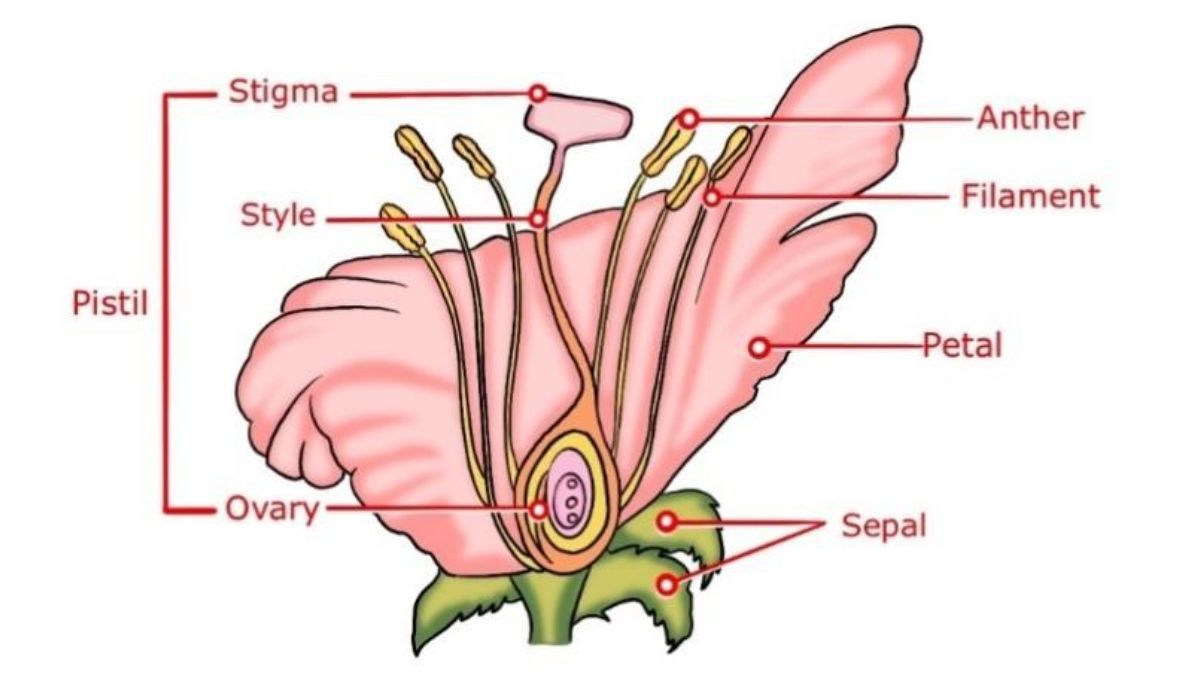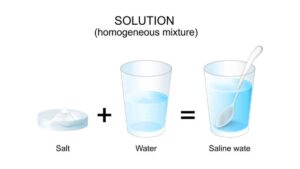The preparation phase for the NEET Exam 2026 require aspirants to complete their preparation by reading and learning all the important topics mentioned in the NEET Syllabus 2026. The exam tests student’s knowledge and skills from Physics, Chemistry and Biology subjects. In this chapter, we have shared the NEET Notes for the Sexual Reproduction in Flowering Plants so that all the students who are to appear for the National Eligibility cum Entrance Test can complete their preparations using this. Scroll down in the article and find the link to download NEET Notes PDF along with the important questions for exam preparation.
Sexual Reproduction in Flowering Plants
Sexual reproduction in flowering plants involves the fusion of male and female gametes to produce a zygote, which develops into an embryo, seed, and fruit. The process is centered on the flower, which contains the male reproductive organs (stamens) and female reproductive organs (pistils). Key stages include pre-fertilization (pollen and embryo sac formation, pollination), fertilization (including double fertilization), and post-fertilization (embryo, seed, and fruit development).
Scroll down in the article to read the topic wise overview of the Sexual Reproduction in Flowering Plants chapter.
1. Flower – The Reproductive Unit
- Flowers are the sites of sexual reproduction in angiosperms.
- A flower typically consists of four whorls:
-
- Calyx (sepals) – protective in function
- Corolla (petals) – attracts pollinators
- Androecium (stamens) – male reproductive part
- Gynoecium (carpels) – female reproductive part
- Bisexual flowers contain both androecium and gynoecium.
- Unisexual flowers have either stamens or carpels, not both.
2. Structure of the Stamen (Male Reproductive Part)
- Each stamen = Filament + Anther.
- Anther is bilobed and tetrasporangiate (has four microsporangia).
- Microsporangium contains pollen mother cells (PMCs) which undergo meiosis to form haploid microspores (pollen grains).
- Pollen grains are the male gametophytes.
-
- Outer wall: Exine (made of sporopollenin – very resistant).
- Inner wall: Intine (cellulose and pectin).
- Contains: Two cells – vegetative cell and generative cell.
3. Structure of the Carpel (Female Reproductive Part)
- Gynoecium may have one or more carpels.
- Each carpel = Stigma + Style + Ovary.
- Ovary contains ovules, which develop into seeds after fertilization.
- Ovule = Funicle + Hilum + Nucellus + Integuments + Embryo sac.
- Embryo sac (female gametophyte) is 7-celled and 8-nucleate:
-
- Egg cell
- Synergids
- Antipodals
- Polar nuclei (which fuse to form a secondary nucleus)
4. Pollination
Pollination is the transfer of pollen grains from anther to stigma.
Types of Pollination
- Autogamy (Self-pollination) – pollen from same flower
- Geitonogamy – pollen from another flower on same plant
- Xenogamy (Cross-pollination) – pollen from flower of another plant
Agents of Pollination
- Abiotic: Wind (Anemophily), Water (Hydrophily)
- Biotic: Insects, birds, bats, etc. (Entomophily, Ornithophily, Chiropterophily)
Adaptations for Pollination:
- Bright petals, nectar, fragrance (biotic)
- Light pollen, feathery stigma (abiotic)
5. Double Fertilization
-
Unique to angiosperms.
-
Pollen tube releases two male gametes:
- One fuses with the egg cell → Zygote (2n)
- Other fuses with two polar nuclei → Primary endosperm nucleus (3n)
-
This is called Double Fertilization.
-
Result:
- Zygote → Embryo
- Primary endosperm nucleus → Endosperm
6. Development of Seed and Fruit
-
After fertilization:
- Ovule → Seed
- Ovary → Fruit
-
Seed consists of:
- Seed coat (testa, tegmen)
- Embryo (radicle, plumule, cotyledons)
- Endosperm (nutrient source)
-
Fruit helps in protection and dispersal of seeds.
7. Apomixis and Polyembryony
-
Apomixis – Formation of seeds without fertilization.
-
Found in some grasses (e.g., Hieracium).
-
-
Polyembryony – More than one embryo in a single seed.
-
Common in citrus and mango.
-
8. Importance of Sexual Reproduction in Flowering Plants
- Ensures genetic variation, essential for evolution.
- Maintains species continuity.
- Enables seed formation for propagation.
- Provides hybrid vigor and adaptability.
- Allows crop improvement through breeding techniques.
- Contributes to biodiversity and ecosystem balance.
- Plays a vital role in agriculture and food production.
Importance of Sexual Reproduction in Flowering Plants NEET Notes
Preparing for the NEET Exam require students to clear concepts of all te topics with clear understanding and for this reason the Notes are the best resource for any student. Therefore, we have cites some of the reasons that explains the importance of Sexual Reproduction in Flowering Plants NEET Notes:
- Creates Genetic Variety: Sexual reproduction mixes genes from two parent plants, leading to unique combinations that help plants evolve and adapt to their surroundings.
- Continues the Life Cycle: It allows plants to produce seeds that grow into new individuals, ensuring the survival of their species generation after generation.
- Helps in Adaptation and Evolution: Because of the new gene combinations formed during fertilization, plants can better adjust to environmental changes and challenges.
- Produces Seeds and Fruits: This process results in the formation of seeds and fruits, which not only help in reproduction and seed dispersal but also serve as food for humans and animals.
- Supports Crop Improvement: Understanding sexual reproduction helps scientists and farmers create better crop varieties through hybridization and breeding techniques.
- Boosts Biodiversity: By encouraging genetic mixing and cross-pollination, sexual reproduction increases plant diversity, keeping ecosystems balanced and healthy.
- Ensures Successful Fertilization: Different methods of pollination-like by wind, water, or insects-make sure that plants can reproduce successfully in various conditions.
- Strengthens Agriculture: Knowledge of plant reproduction is the base for producing quality seeds, developing hybrids, and improving agricultural productivity worldwide.
Important NEET Practice Questions on Sexual Reproduction in Flowering Plants
- Discuss the role of pollen tube in fertilization.
- Define cleistogamous and chasmogamous flowers. Give examples.
- What is the difference between perisperm and endosperm?
- Describe the post-fertilization changes that occur in a flower.
- Draw and label a mature embryo sac of a flowering plant.
- Why is double fertilization unique to angiosperms?
- Define emasculation and bagging. Why are these steps important in artificial hybridization?
- Why are pollen grains of some plants preserved as fossils?
- How does the endosperm develop and what is its significance?
- Differentiate between true fruits and false fruits with examples.
- Describe the process of microsporogenesis and megasporogenesis.
- How does cross-pollination occur in wind-pollinated flowers? Mention two adaptations.
- Differentiate between autogamy, geitonogamy, and xenogamy with examples.
- What are the structural differences between a monocot and dicot seed?
- Explain the changes that take place in the ovule and ovary after fertilization.
- What is apomixis? How does it differ from normal sexual reproduction?
- What are the advantages and disadvantages of self-pollination?
- How does sexual reproduction contribute to evolution in flowering plants?
- Compare natural and artificial methods of pollination.
- What is meant by double fertilization in flowering plants?
- What are parthenocarpic fruits? Give one example and its importance.
- What are the agents of pollination? Give examples of biotic and abiotic pollination.
- Explain the structure of an anatropous ovule with a labeled diagram.
- What are the functions of synergids and antipodals in an embryo sac?
- What are the economic uses of fruits and seeds in human life?
- Write short notes on polyembryony with suitable examples.
- What is self-incompatibility? How does it promote cross-pollination?
- Explain how fertilization leads to the development of seed and fruit.
- Explain the structure and functions of pollen grains.
- How is pollen viability maintained during storage?









 NEET Preparation Strategy 2026: Detailed...
NEET Preparation Strategy 2026: Detailed...
 Free NEET Sample Papers 2026 PDF | Downl...
Free NEET Sample Papers 2026 PDF | Downl...
 Salt Analysis NEET Notes, Check Importan...
Salt Analysis NEET Notes, Check Importan...









